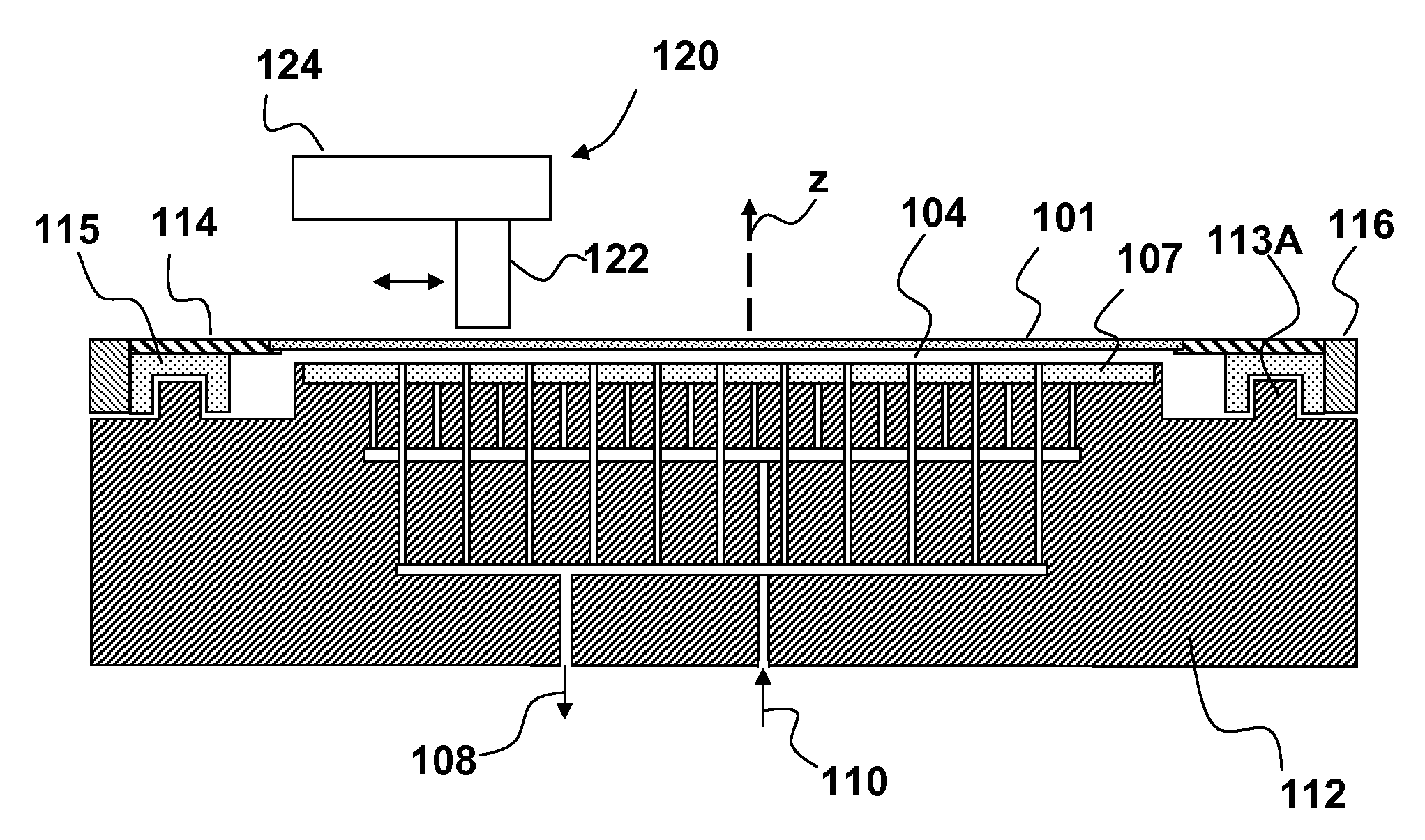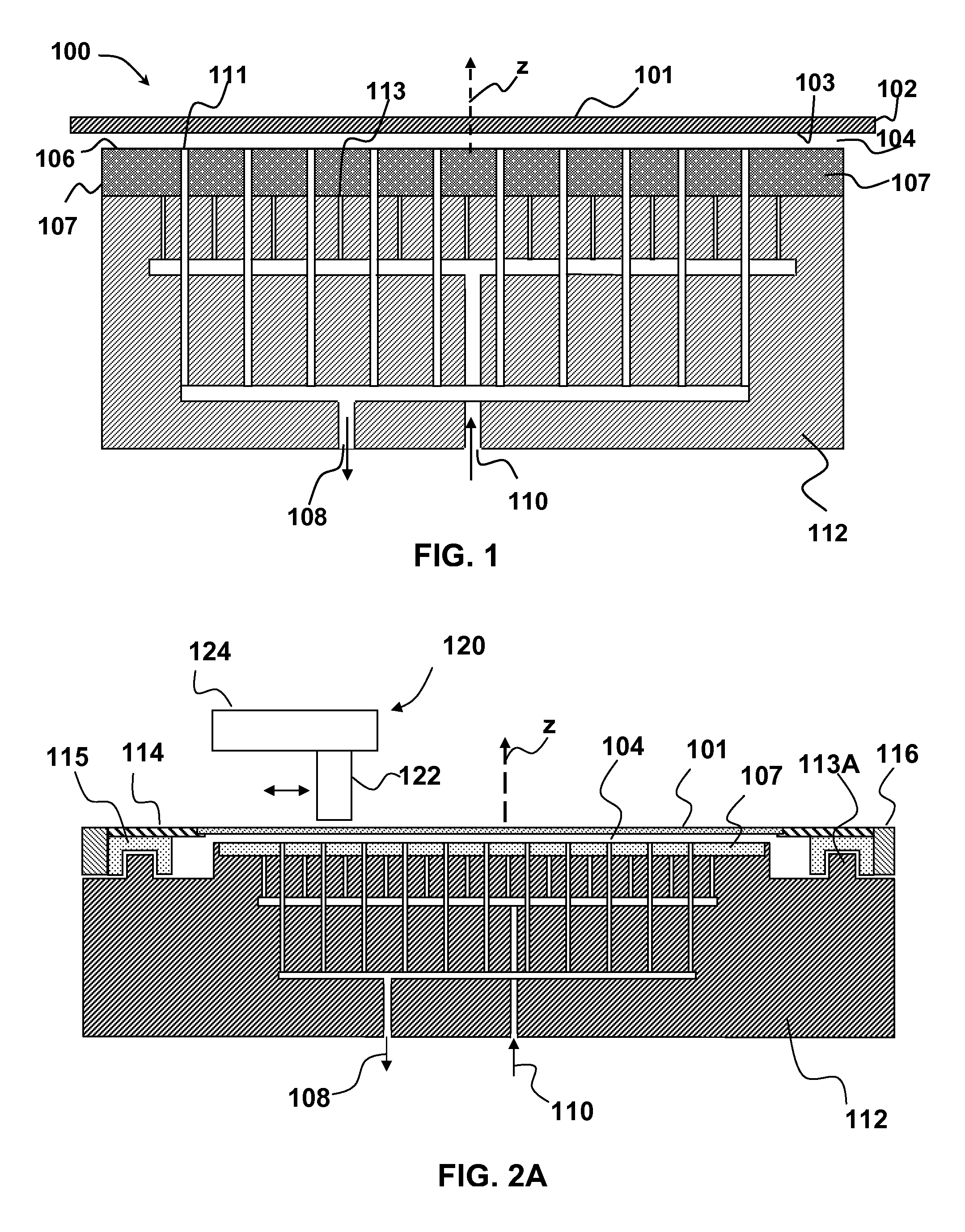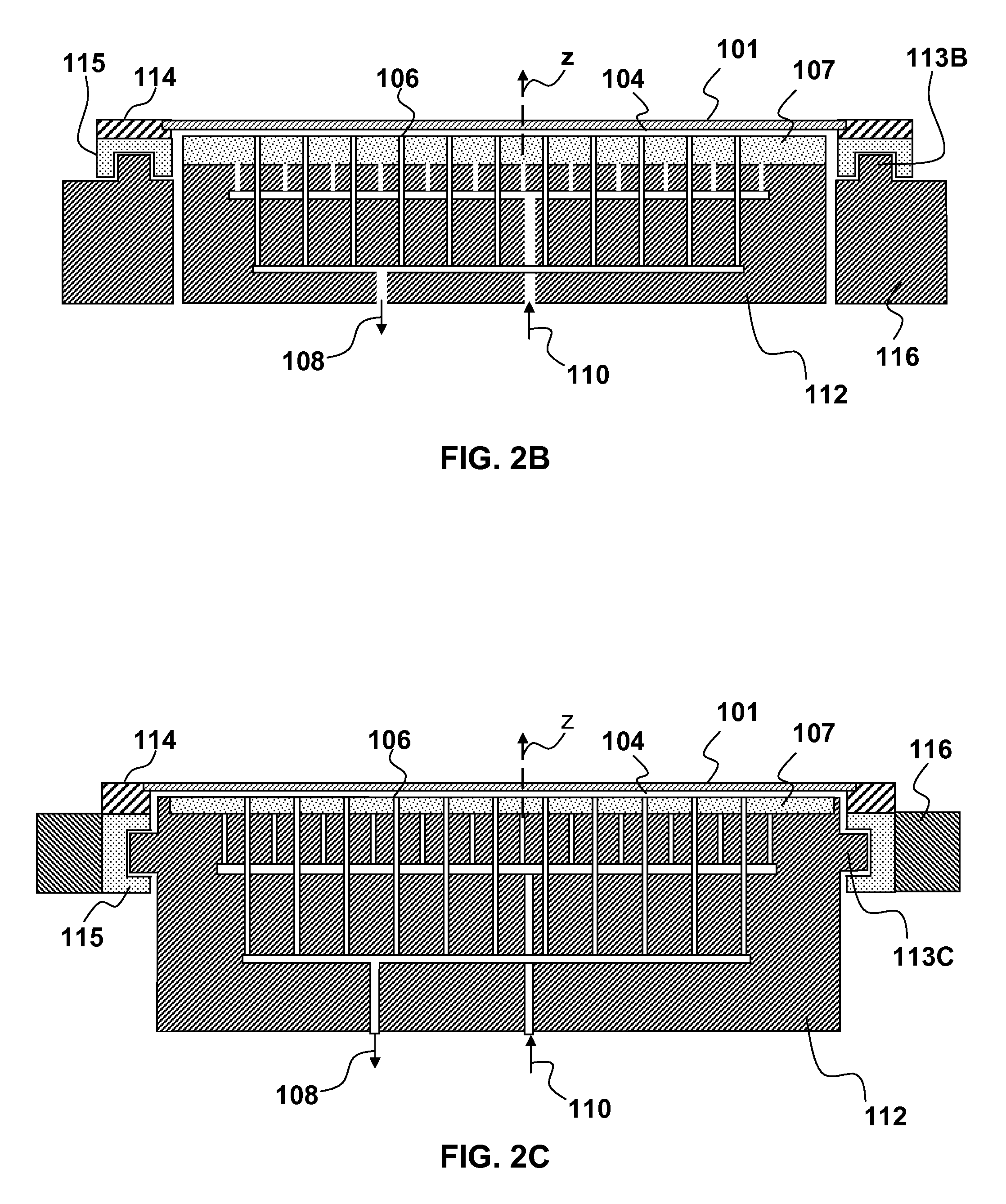Stabilizing a substrate using a vacuum preload air bearing chuck
a vacuum preloading and air bearing technology, applied in the direction of mechanical means, instruments, manufacturing tools, etc., can solve the problems of limited bandwidth, reduced depth of focus, reduced spot size of “probe”, etc., and achieve the effect of preventing deformation of thin and flexible wafers
- Summary
- Abstract
- Description
- Claims
- Application Information
AI Technical Summary
Benefits of technology
Problems solved by technology
Method used
Image
Examples
Embodiment Construction
[0015]Although the following detailed description contains many specific details for the purposes of illustration, anyone of ordinary skill in the art will appreciate that many variations and alterations to the following details are within the scope of the invention. Accordingly, the exemplary embodiments of the invention described below are set forth without any loss of generality to, and without imposing limitations upon, the claimed invention.
[0016]Recently, vacuum preload air-bearings have been developed. A vacuum preload air bearing generally uses a combination of vacuum and air pressure to lift a load without contacting it. A vacuum preload air-bearing generally comprises a manifold having a central vacuum port surrounded by one or more air pressure ports. Vacuum is applied to the vacuum port and air pressure is provided to the air pressure ports. The combination of vacuum and air pressure provides both a lifting force and an air cushion that keeps the load from contacting the...
PUM
| Property | Measurement | Unit |
|---|---|---|
| thick | aaaaa | aaaaa |
| diameter | aaaaa | aaaaa |
| diameter | aaaaa | aaaaa |
Abstract
Description
Claims
Application Information
 Login to View More
Login to View More - R&D
- Intellectual Property
- Life Sciences
- Materials
- Tech Scout
- Unparalleled Data Quality
- Higher Quality Content
- 60% Fewer Hallucinations
Browse by: Latest US Patents, China's latest patents, Technical Efficacy Thesaurus, Application Domain, Technology Topic, Popular Technical Reports.
© 2025 PatSnap. All rights reserved.Legal|Privacy policy|Modern Slavery Act Transparency Statement|Sitemap|About US| Contact US: help@patsnap.com



